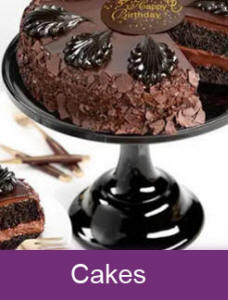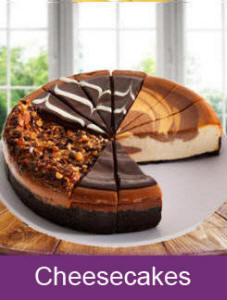Alabama - Anniston, Auburn, Birmingham, Decatur, Dothan, Enterprise, Florence, Gadsden, Homewood, Hoover, Huntsville, Madison, Mobile, Montgomery, Northport, Opelika, Phenix City, Prattville, Tuscaloosa, Vestavia Hills.
Alaska - Anchorage, Barrow, Bethel, Fairbanks, Homer, Juneau, Kenai, Ketchikan, Kodiak, Kotzebue, Nome, Palmer, Petersburg, Seward, Sitka, Soldotna, Unalaska, Valdez, Wasilla, Wrangell.
Arizona - Avondale, Buckeye, Casa Grande, Chandler, Flagstaff, Gilbert, Glendale, Goodyear, Lake Havasu City, Maricopa, Mesa, Oro Valley, Peoria, Phoenix, Scottsdale, Sierra Vista, Surprise, Tempe, Tucson, Yuma.
Arkansas - Benton, Bentonville, Bryant, Cabot, Conway, Fayetteville, Fort Smith, Hot Springs, Jacksonville, Jonesboro, Little Rock, North Little Rock, Paragould, Pine Bluff, Rogers, Searcy, Sherwood, Springdale, Texarkana, West Memphis.
California - Anaheim, Bakersfield, Chula Vista, Fontana, Fremont, Fresno, Irvine, Long Beach, Los Angeles, Modesto, Moreno Valley, Oakland, Oxnard, Riverside, Sacramento, San Bernardino, San Diego, San Francisco, San Jose, Stockton.
Colorado - Arvada, Aurora, Boulder, Broomfield, Castle Rock, Centennial, Colorado Springs, Commerce City, Denver, Fort Collins, Grand Junction, Greeley, Lakewood, Littleton, Longmont, Loveland, Parker, Pueblo, Thornton, Westminster.
Connecticut - Bridgeport, Bristol, Danbury, Fairfield, Greenwich, Hartford, Meriden, Milford, Middletown, New Britain, New Haven, Norwalk, Norwich, Shelton, Stamford, Torrington, Trumbull, Waterbury, West Hartford, West Haven.
Delaware - Bridgeville, Camden, Claymont, Dover, Elsmere, Georgetown, Harrington, Laurel, Lewes, Middletown, Milford, Millsboro, Milton, New Castle, Newark, Rehoboth Beach, Seaford, Selbyville, Smyrna, Wilmington.
Florida - Cape Coral, Clearwater, Coral Springs, Fort Lauderdale, Gainesville, Hialeah, Hollywood, Jacksonville, Miami, Miami Gardens, Miramar, Orlando, Palm Bay, Pembroke Pines, Pompano Beach, Port St. Lucie, St. Petersburg, Tallahassee, Tampa, West Palm Beach.
Georgia - Albany, Alpharetta, Athens, Atlanta, Augusta, Brookhaven, Columbus, Dunwoody, Johns Creek, Macon, Marietta, Newnan, Peachtree Corners, Rome, Roswell, Sandy Springs, Savannah, Smyrna, Valdosta, Warner Robins.
Hawaii - East Honolulu, Ewa Gentry, Halawa, Hilo, Honolulu, Kahului, Kailua, Kaneohe, Kapaa, Kapolei, Kihei, Lahaina, Makakilo, Mililani Town, Ocean Pointe, Pearl City, Schofield Barracks, Wahiawa, Wailuku, Waipahu.
Idaho - Ammon, Blackfoot, Boise, Caldwell, Chubbuck, Eagle, Garden City, Hayden, Idaho Falls, Jerome, Kuna, Lewiston, Meridian, Moscow, Mountain Home, Nampa, Post Falls, Pocatello, Rexburg, Twin Falls.
Illinois - Arlington Heights, Aurora, Bloomington, Bolingbrook, Champaign, Chicago, Cicero, Decatur, Des Plaines, Elgin, Evanston, Joliet, Naperville, Palatine, Peoria, Rockford, Schaumburg, Skokie, Springfield, Waukegan.
Indiana - Anderson, Bloomington, Carmel, Elkhart, Evansville, Fishers, Fort Wayne, Gary, Greenwood, Hammond, Indianapolis, Kokomo, Lafayette, Lawrence, Mishawaka, Muncie, Noblesville, South Bend, Terre Haute, West Lafayette.
Iowa - Ames, Ankeny, Bettendorf, Burlington, Cedar Falls, Cedar Rapids, Clinton, Council Bluffs, Davenport, Des Moines, Dubuque, Fort Dodge, Iowa City, Marion, Mason City, Ottumwa, Sioux City, Urbandale, Waterloo, West Des Moines.
Kansas - Derby, Dodge City, Emporia, Garden City, Hays, Hutchinson, Kansas City, Lawrence, Leavenworth, Leawood, Lenexa, Liberal, Manhattan, Olathe, Overland Park, Prairie Village, Salina, Shawnee, Topeka, Wichita.
Kentucky - Ashland, Bowling Green, Covington, Elizabethtown, Erlanger, Florence, Frankfort, Georgetown, Henderson, Hopkinsville, Independence, Jeffersontown, Lexington, Louisville, Nicholasville, Owensboro, Paducah, Radcliff, Richmond, St. Matthews.
Louisiana - Alexandria, Baton Rouge, Bossier City, Central, Gretna, Hammond, Houma, Kenner, Lafayette, Lake Charles, Monroe, Natchitoches, New Iberia, New Orleans, Opelousas, Ruston, Shreveport, Slidell, Sulphur, Zachary.
Maine - Augusta, Auburn, Bangor, Bath, Biddeford, Brunswick, Gorham, Lewiston, Old Town, Orono, Portland, Presque Isle, Saco, Sanford, Scarborough, South Portland, Waterville, Westbrook, Windham, Yarmouth.
Maryland - Aspen Hill, Baltimore, Bethesda, Bowie, Columbia, Dundalk, Ellicott City, Frederick, Gaithersburg, Germantown, Glen Burnie, Hagerstown, North Bethesda, Potomac, Rockville, Severn, Silver Spring, Towson, Waldorf, Wheaton.
Massachusetts - Boston, Brockton, Cambridge, Chicopee, Fall River, Framingham, Haverhill, Lawrence, Lowell, Lynn, Malden, Medford, New Bedford, Newton, Quincy, Somerville, Springfield, Taunton, Waltham, Worcester.
Michigan - Ann Arbor, Dearborn, Detroit, Farmington Hills, Grand Rapids, Kalamazoo, Lansing, Livonia, Novi, Pontiac, Rochester Hills, Royal Oak, Southfield, St. Clair Shores, Sterling Heights, Taylor, Troy, Warren, Westland, Wyoming.
Minnesota - Apple Valley, Blaine, Bloomington, Brooklyn Park, Burnsville, Coon Rapids, Duluth, Eagan, Eden Prairie, Edina, Lakeville, Mankato, Maple Grove, Minneapolis, Minnetonka, Plymouth, Rochester, St. Cloud, St. Paul, Woodbury.
Mississippi - Biloxi, Brandon, Clinton, Columbus, Greenville, Gulfport, Hattiesburg, Horn Lake, Jackson, Madison, Meridian, Olive Branch, Oxford, Pascagoula, Pearl, Ridgeland, Southaven, Starkville, Tupelo, Vicksburg.
Missouri - Blue Springs, Cape Girardeau, Chesterfield, Columbia, Florissant, Independence, Jefferson City, Joplin, Kansas City, Lee's Summit, Liberty, O'Fallon, St. Charles, St. Joseph, St. Louis, St. Peters, Springfield, University City, Wentzville, Wildwood.
Montana - Anaconda, Belgrade, Billings, Bozeman, Butte, Columbia Falls, Glendive, Great Falls, Hamilton, Havre, Helena, Kalispell, Laurel, Lewistown, Livingston, Miles City, Missoula, Polson, Sidney, Whitefish.
Nebraska - Alliance, Beatrice, Bellevue, Blair, Columbus, Fremont, Gering, Grand Island, Hastings, Kearney, La Vista, Lexington, Lincoln, Norfolk, North Platte, Omaha, Papillion, Scottsbluff, South Sioux City, York.
Nevada - Boulder City, Carson City, Cold Springs, Elko, Ely, Fallon, Fernley, Henderson, Incline Village, Las Vegas, Mesquite, North Las Vegas, Pahrump, Reno, Spanish Springs, Sparks, Spring Creek, Sun Valley, West Wendover, Winnemucca.
New Hampshire - Bedford, Claremont, Concord, Derry, Dover, Goffstown, Hooksett, Hudson, Keene, Laconia, Lebanon, Londonderry, Manchester, Merrimack, Milford, Nashua, Portsmouth, Rochester, Salem, Somersworth.
New Jersey - Bayonne, Brick, Camden, Cherry Hill, Clifton, Edison, Elizabeth, Franklin, Jersey City, Lakewood, Middletown, Newark, Old Bridge, Passaic, Paterson, Toms River, Trenton, Union City, Vineland, Woodbridge.
New Mexico - Alamogordo, Albuquerque, Artesia, Carlsbad, Chaparral, Clovis, Deming, Farmington, Gallup, Hobbs, Las Cruces, Las Vegas, Los Lunas, Lovington, Portales, Rio Rancho, Roswell, Santa Fe, Silver City, Sunland Park.
New York - Albany, Binghamton, Buffalo, Freeport, Hempstead, Long Beach, Mount Vernon, New Rochelle, New York, Niagara Falls, Poughkeepsie, Rochester, Rome, Schenectady, Syracuse, Troy, Utica, Valley Stream, White Plains, Yonkers.
North Carolina - Apex, Asheville, Burlington, Cary, Chapel Hill, Charlotte, Concord, Durham, Fayetteville, Gastonia, Greensboro, Greenville, High Point, Huntersville, Jacksonville, Kannapolis, Raleigh, Rocky Mount, Wilmington, Winston-Salem.
North Dakota - Beulah, Bismarck, Devils Lake, Dickinson, Fargo, Grafton, Grand Forks, Harvey, Horace, Jamestown, Lincoln, Mandan, Minot, Belcourt, Rugby, Valley City, Wahpeton, Watford City, West Fargo, Williston.
Ohio - Akron, Canton, Cincinnati, Cleveland, Columbus, Cuyahoga Falls, Dayton, Elyria, Euclid, Hamilton, Kettering, Lakewood, Lorain, Mansfield, Middletown, Newark, Parma, Springfield, Toledo, Youngstown.
Oklahoma - Ardmore, Bartlesville, Bixby, Broken Arrow, Del City, Duncan, Edmond, Enid, Lawton, Midwest City, Moore, Muskogee, Norman, Oklahoma City, Owasso, Ponca City, Shawnee, Stillwater, Tulsa, Yukon.
Oregon - Albany, Beaverton, Bend, Corvallis, Eugene, Grants Pass, Gresham, Hillsboro, Keizer, Lake Oswego, McMinnville, Medford, Oregon City, Portland, Redmond, Salem, Springfield, Tigard, Tualatin, West Linn.
Pennsylvania - Allentown, Altoona, Bethlehem, Chester, Easton, Erie, Harrisburg, Johnstown, Lancaster, Lebanon, New Castle, Norristown, Philadelphia, Pittsburgh, Pottstown, Reading, Scranton, State College, Wilkes-Barre, York.
Rhode Island - Barrington, Bristol, Central Falls, Coventry, Cranston, Cumberland, East Providence, Johnston, Lincoln, Newport, North Kingstown, North Providence, Pawtucket, Providence, Smithfield, South Kingstown, Warwick, West Warwick, Westerly, Woonsocket.
South Carolina - Aiken, Anderson, Charleston, Columbia, Conway, Florence, Goose Creek, Greenville, Greer, Greenwood, Hilton Head Island, Mauldin, Mount Pleasant, Myrtle Beach, North Augusta, North Charleston, Rock Hill, Spartanburg, Sumter, Summerville.
South Dakota - Aberdeen, Box Elder, Brandon, Brookings, Dell Rapids, Harrisburg, Hot Springs, Huron, Madison, Milbank, Mitchell, Pierre, Rapid City, Sioux Falls, Spearfish, Sturgis, Tea, Vermillion, Watertown, Yankton.
Tennessee - Bartlett, Brentwood, Chattanooga, Clarksville, Cleveland, Collierville, Columbia, Franklin, Gallatin, Germantown, Hendersonville, Jackson, Johnson City, Kingsport, Knoxville, La Vergne, Memphis, Murfreesboro, Nashville, Smyrna.
Texas - Amarillo, Arlington, Austin, Brownsville, Corpus Christi, Dallas, El Paso, Fort Worth, Frisco, Garland, Grand Prairie, Houston, Irving, Killeen, Laredo, Lubbock, McKinney, Pasadena, Plano, San Antonio.
Utah - Bountiful, Draper, Layton, Lehi, Logan, Murray, Ogden, Orem, Pleasant Grove, Provo, Riverton, Roy, Salt Lake City, Sandy, South Jordan, Spanish Fork, St. George, Taylorsville, West Jordan, West Valley City.
Vermont - Barre, Bennington, Brattleboro, Burlington, Colchester, Essex Junction, Hartford, Middlebury, Milton, Montpelier, Newport, Rutland, Shelburne, South Burlington, Springfield, St. Albans, St. Johnsbury, Swanton, Williston, Winooski.
Virginia - Alexandria, Charlottesville, Chesapeake, Danville, Fredericksburg, Hampton, Harrisonburg, Leesburg, Lynchburg, Manassas, Newport News, Norfolk, Petersburg, Portsmouth, Richmond, Roanoke, Salem, Suffolk, Virginia Beach, Winchester.
Washington - Auburn, Bellevue, Bellingham, Everett, Federal Way, Kennewick, Kent, Kirkland, Lacey, Marysville, Olympia, Pasco, Redmond, Renton, Seattle, Spokane, Spokane Valley, Tacoma, Vancouver, Yakima.
West Virginia - Beckley, Bluefield, Bridgeport, Charles Town, Charleston, Clarksburg, Elkins, Fairmont, Huntington, Hurricane, Martinsburg, Morgantown, Moundsville, Oak Hill, Parkersburg, St. Albans, South Charleston, Vienna, Weirton, Wheeling.
Wisconsin - Appleton, Brookfield, Eau Claire, Fond du Lac, Green Bay, Janesville, Kenosha, La Crosse, Madison, Manitowoc, Milwaukee, New Berlin, Oshkosh, Racine, Sheboygan, Sun Prairie, Waukesha, Wausau, Wauwatosa, West Allis.
Wyoming - Buffalo, Casper, Cheyenne, Cody, Douglas, Evanston, Gillette, Green River, Jackson, Lander, Laramie, Newcastle, Powell, Rawlins, Riverton, Rock Springs, Sheridan, Thermopolis, Torrington, Worland.




















